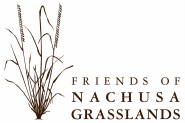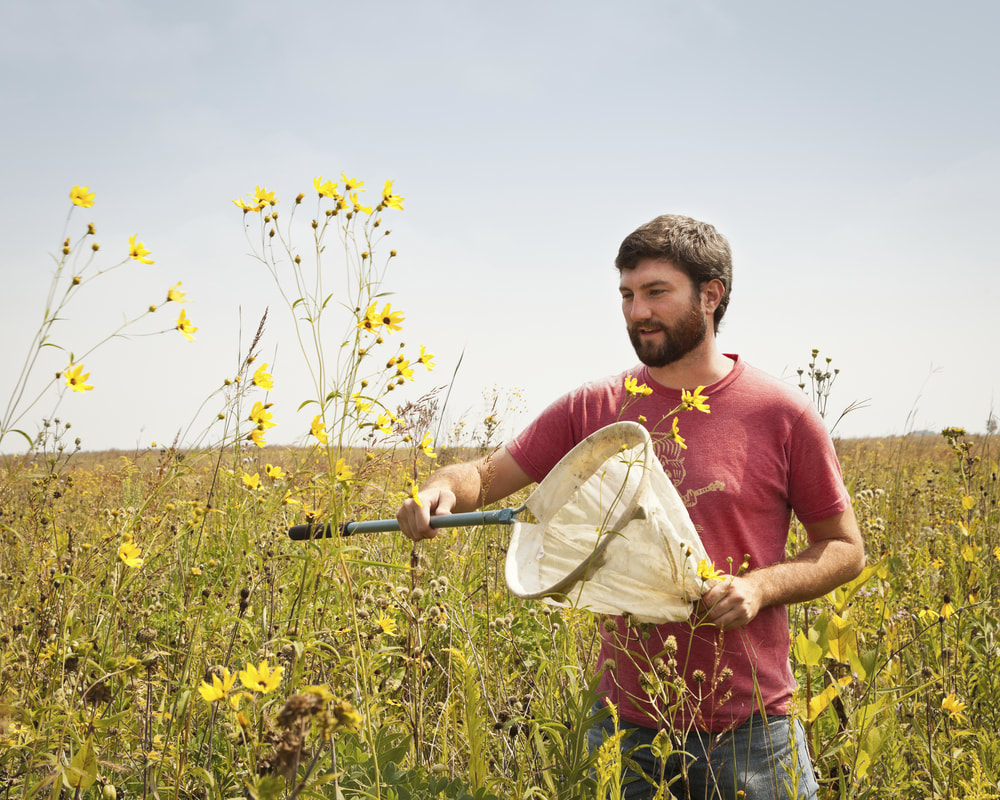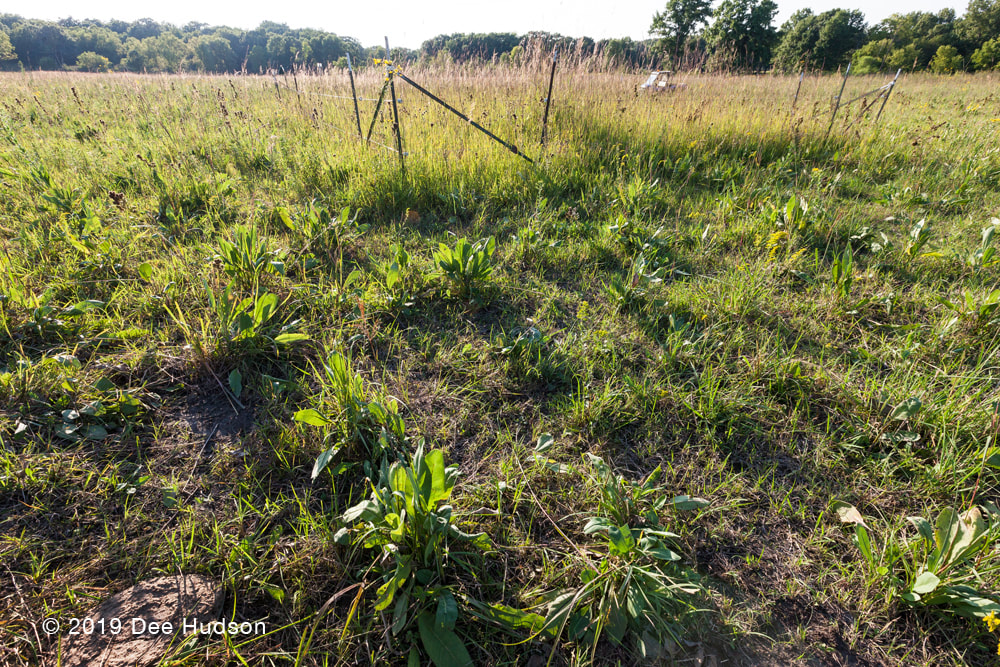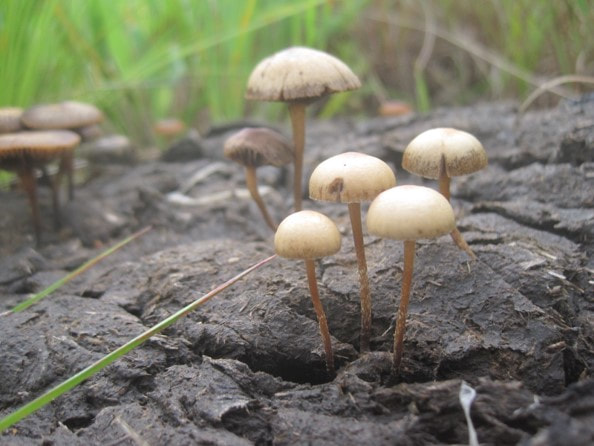|
By Jenn Simons Nachusa Grasslands Science Extern On January 10th, 2019 I made a simple phone call to Nachusa Grasslands. Four months later, I was packing up my things to spend the summer living 480 miles east of my hometown. And with that, this Nebraska native ended up in an eastern tallgrass prairie state of both mind and place.  Jenn Simons Jenn Simons Prior to that fateful January day, as a graduate student at the University of Wisconsin-Madison I had narrowed down my research interests to the impact of conservation grazing on vegetation in midwestern prairies. My goal was to meet the requirements of my degree with a research project at the intersection of stewardship and applied ecology. Though the importance of disturbance to prairie management is well known, grazing on restored and remnant prairies has been a contested issue. Additional data to understand some of the trade-offs to using grazing for land management facilitate better understanding and application of the tools available in a land manager’s toolbox. The only thing that I was missing to begin my research was access to a herd of conservation grazers (nothing too significant, right?). During my quest to connect with folks using grazing as a land management tool in prairies, I ended up on the phone with Dr. Elizabeth Bach at Nachusa. As many of you know, it’s hard not to fall in love with a site as beautiful and biodiverse as Nachusa Grasslands. It’s even harder not to fall in love if that site also features a herd of grazing animals and the existing infrastructure to study their impacts. After my first conversation with Dr. Bach, I was sold. Nachusa was where I wanted to be, and the impact of their bison was what I wanted to study. In my case, and the case of many other grad students, there’s a gap in available funding between spring and fall school semesters. Grants and assistantships don’t always pan out, and many degrees in ecology require a large amount of data collection during the summer months (something rather at odds with working full time). Fortunately, 2019 marked the first summer for a Science Extern position at Nachusa. Open to all graduate students currently or beginning to conduct research specifically at Nachusa, the externship was to be awarded as an external grant to the student’s home university and paid as a salary, allowing the student to remain enrolled and continue receiving benefits. Just as the crew of seasonal employees spends their week supporting land stewardship needs throughout the summer, the role of the science extern was to support data stewardship needs throughout the summer. This position continues Nachusa’s history of encouraging research and providing opportunities for budding conservationists. With my fingers crossed, I submitted my application for the position and tried not to get my hopes up. I made a mental plan B (and C and D) for how I might be able to make my Nachusa research dreams come true if my application wasn’t successful. Work full time and collect data on the weekends? Take out loans? Choose a simpler research question? These are questions most grad students have had to seriously consider at some point. When sites like Nachusa are able to offer summer positions that merge science with practice, both the student and the site benefit from the results. Much to my delight, plan A came through, and I never looked back. Since May I’ve been assisting in collection, entry, and analysis of core ecological data for Nachusa while simultaneously collecting my own data. To answer my research questions, I’m leveraging twenty-two fenced plots (10mx18m) replicated across habitat types in the 1,500 acres of bison habitat that were designed and built by Bill Kleiman, Cody Considine, TNC staff, and collaborating scientists prior to the introduction of the bison in 2014. As opposed to keeping something inside a fenced in area, these fenced plots function as “exclosures” and keep bison outside the fenced area. Building on plant community data taken in 2014-15 and 2017-18, I’m collecting additional data to compare changes in the vegetation diversity, structure, and abundance along with soil compaction between grazed and ungrazed land over time. With the mentorship of Dr. Bach and my advisor, John Harrington, these data will be analyzed and contribute to both the advancement of my degree and the understanding of how bison have impacted Nachusa’s vegetation. In addition to the various science program tasks, opportunities abound to participate in stewardship activities and learn more about careers in ecology outside of academia. I’ve gotten to track Blanding’s turtle, set traps for small mammals, participate in evening moth surveys, observe rare plants in their natural settings, improve my R coding ability, utilize ArcGIS to create new maps, collect seeds and control weeds with the seasonal crew, and talk with highly knowledgeable volunteer land stewards. I can honestly say there’s no place I’d rather be this summer than at Nachusa Grasslands, and I’ve already become a better ecologist as a result.
2 Comments
By Dr. Elizabeth Bach, Ecosystem Restoration Scientist December 5 is World Soil Day, a time to recognize the vital role soils play in our ecosystems and health: growing food, filtering water, recycling air, mitigating climate change, and supporting more than 25% of all biodiversity! Soil is the foundation of prairie restoration at Nachusa Grasslands, the starting point of a prairie planting. There are many questions about how soils impact prairie restoration success and how prairie restoration affects soils. Today, we highlight a few of the soil-focused scientific studies that have been conducted at Nachusa Grasslands:
Question: Do communities of soil critters like earthworms, ants, ground beetles, centipedes, millipedes, and spiders change during prairie restoration? Answers: Prairie restoration increases the number, abundance, and mass of soil critters like earthworms, ants, centipedes, and spiders with time since planting. Interestingly, different prairie remnants, even within the Nachusa preserve, have very different communities of soil invertebrates, and it’s difficult to know what a typical remnant invertebrate community may look like. Wodika & Baer 2015. If we build it, will they colonize? A test of the field of dreams paradigm with soil macroinvertebrate communities. Applied Soil Ecology 91:80-89 Wodika et al. 2014. Colonization and recovery of invertebrate ecosystem engineers during prairie restoration. Restoration Ecology 22: 456-464 Ground beetles show a different pattern, with high numbers of species and abundance in young plantings. Although older plantings had lower species richness, the roles those species play in the ecosystem diverged, indicating that older plantings support stable, diverse beetle communities that fill multiple roles in the ecosystem (e.g. different sizes, active at different parts of the day/night, eating different things). Barber et al. 2017. Species and functional trait re-assembly of ground beetle communities in restored grasslands. Biodiversity and Conservation 26:3481-3498 Question: Do soil microbial communities change during prairie restoration? Answer: Older restorations at Nachusa host microbial communities that are distinct from younger plantings, and that more closely resemble remnant communities. A couple of the key bacterial groups distinctive of prairie remnants and older restorations are Verrucomicrobia and Acidobacteria. The next question is to learn more about what those bacteria do! Barber et al. 2017. Soil microbial community composition in tallgrass prairie restorations converge with remnants across a 27-year chronosequence. Environmental Microbiology 19: 3118-3131 Question: How does plant diversity impact ecosystem functions like soil carbon and nitrogen cycling? Answer: Nachusa’s high plant diversity restorations had more roots, more microbial mass (especially mycorrhizal fungi), more structured soil, and less “leaky” nitrogen compounds that can wind up in water ways compared with low plant diversity restorations in the same area. This is the first study to show that very high plant diversity restoration can lead to improved ecosystem functioning. Klopf et al. 2017. Restoration and management for plant diversity enhances the rate of belowground ecosystem recovery. Ecological Applications 27:355-362 |
Blog CoordinatorDee Hudson
I am a nature photographer, a freelance graphic designer, and steward at Nachusa's Thelma Carpenter Prairie. I have taken photos for Nachusa since 2012. EditorJames Higby
I have been a high school French teacher, registered piano technician, and librarian. In retirement I am a volunteer historian at Lee County Historical and Genealogical Society. Categories
All
Archives
January 2024
|
CONNECT WITH US |
|







 RSS Feed
RSS Feed